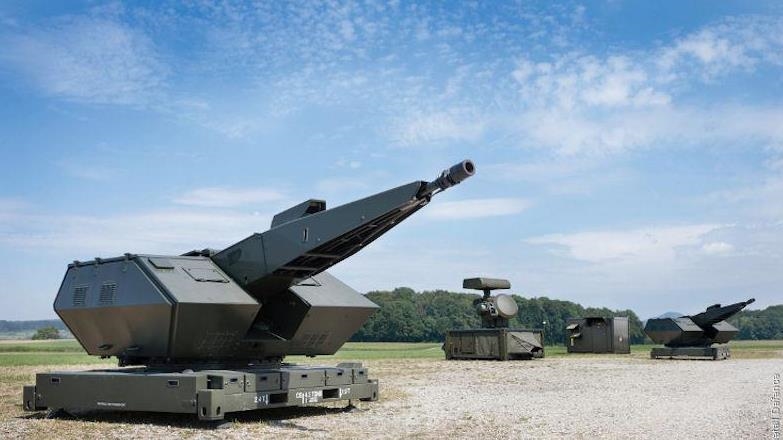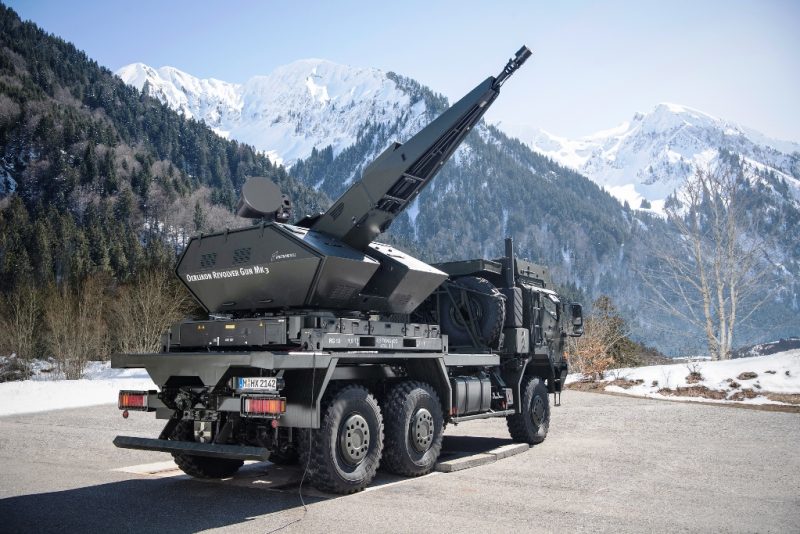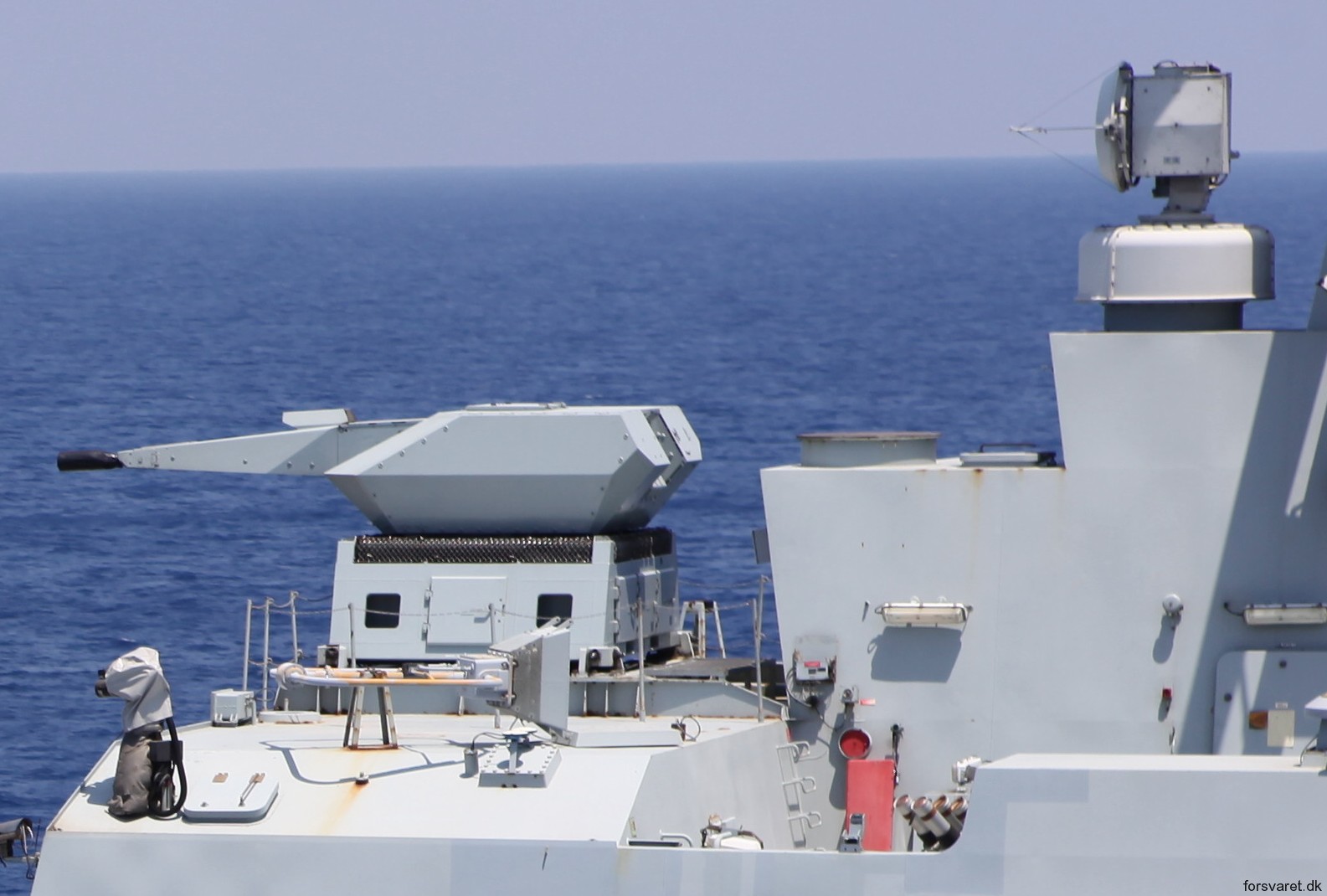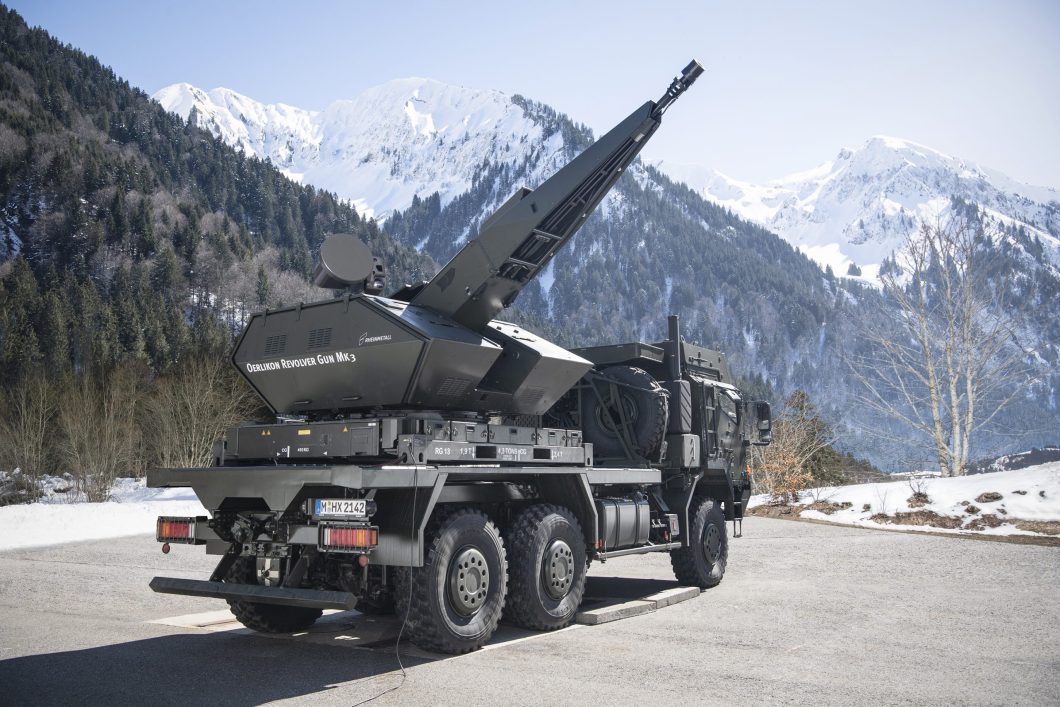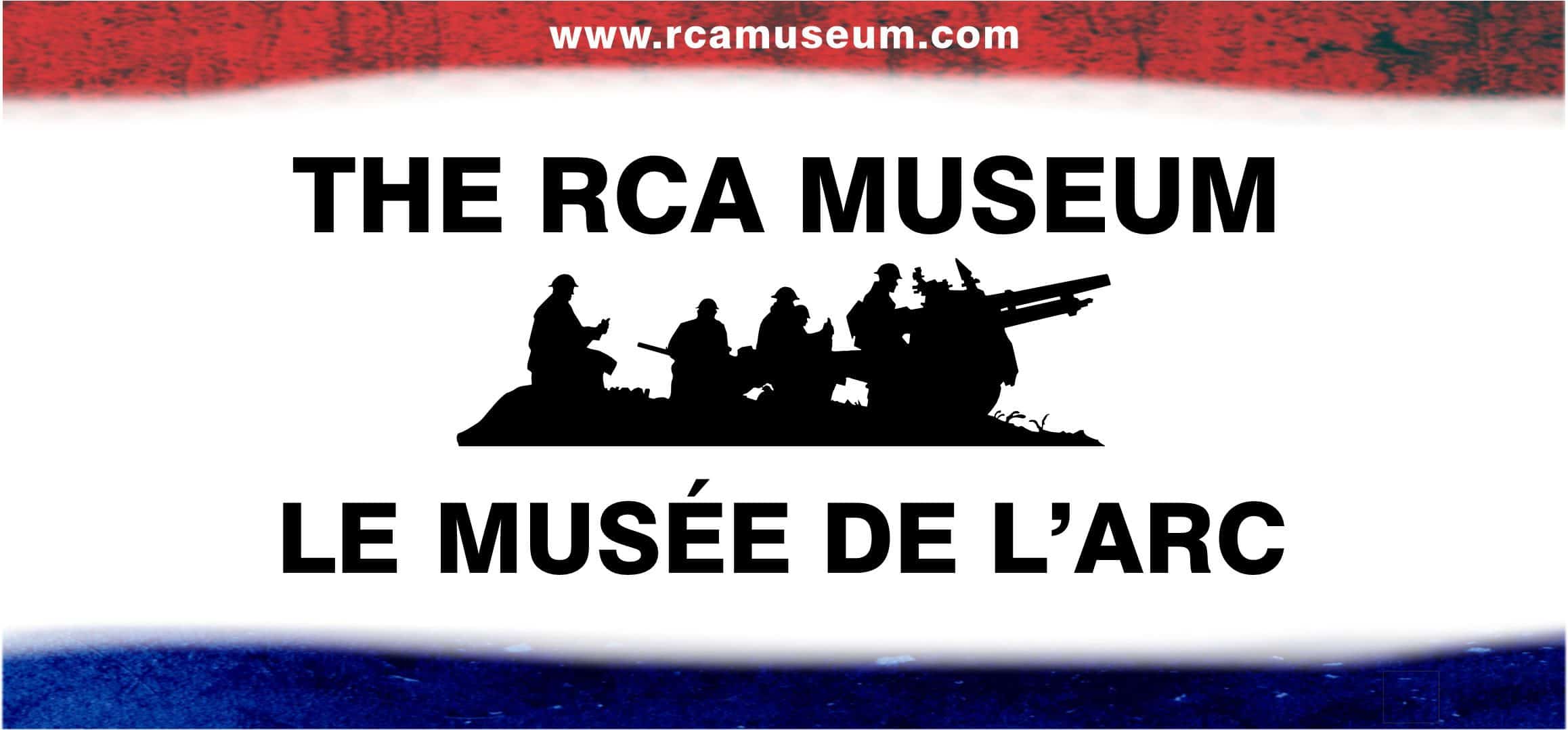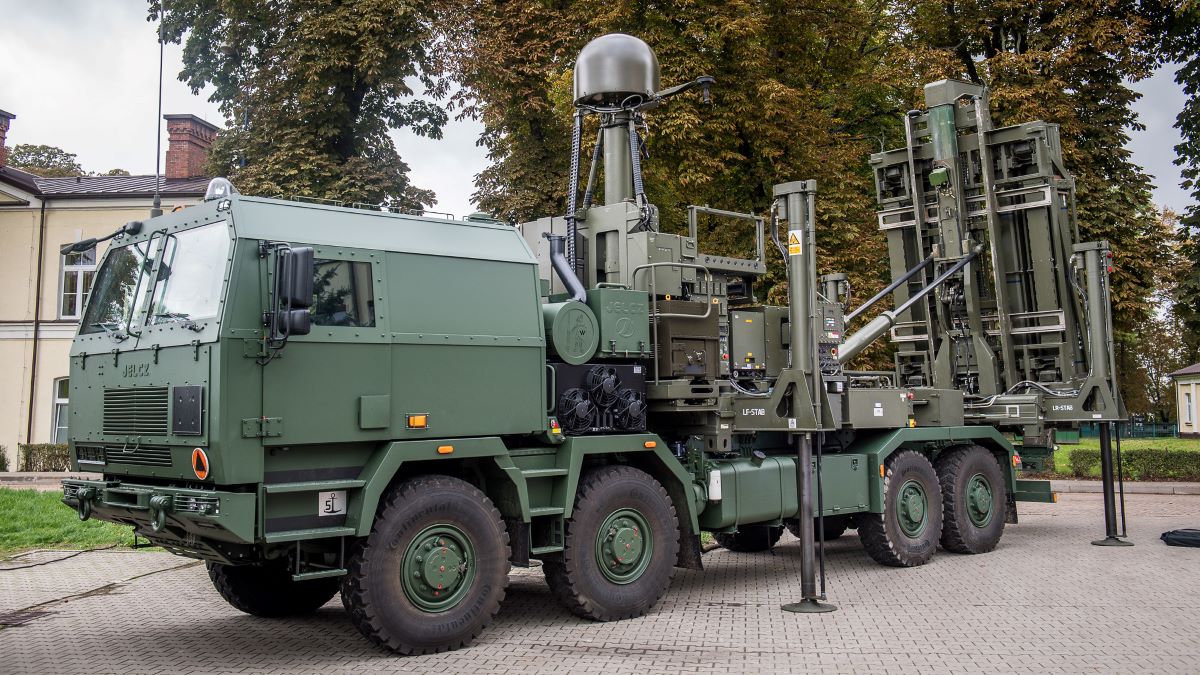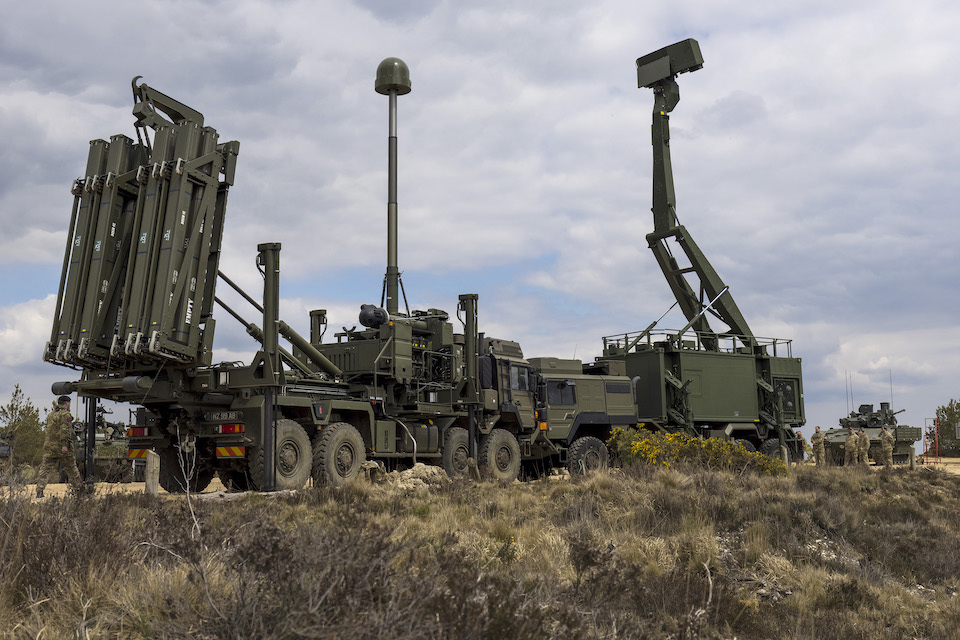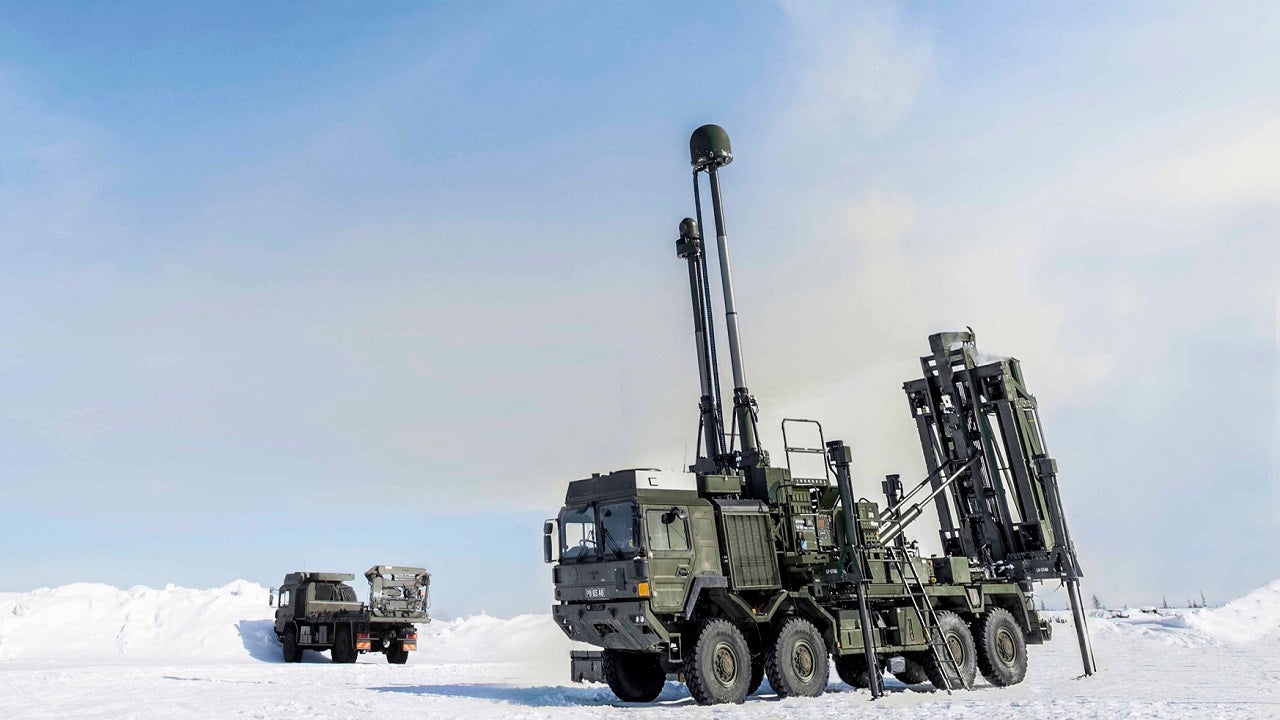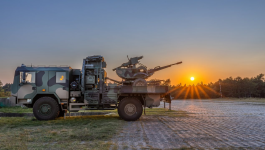Due to the system’s reduced weight, the Skyranger 30 turret is able to integrate two short-range
surface-to-air missiles (SAMs). Missiles guided by
laser beam riding or
infrared homing such as the
FIM-92 Stinger or
Mistral can be integrated, as well as the
SkyKnight. Depending on the type, missiles extend range up to 8-9 km, while the gun covers the space under their minimum engagement range.
[1][2][3]
To detect targets, the Skyranger 30 uses the
S-band AESA Multi-Mission Radar (AMMR) developed by Rheinmetall Italia. Five flat antennas integrated around the turret provide full 360° coverage. The AMMR has a detection range of over 20 km for a 1 m2
RCS aircraft, 12 km against hovering helicopters, 10 km against missiles, and 5 km against RAM targets and micro-UAS. For passive detection, the vehicle is installed with Rheinmetall’s FIRST (Fast
InfraRed Search and Track), which is optimized to detect pop-up targets such as helicopters. Identification and tracking is handled by a compact target tracker that includes one HD cooled MWIR
thermal camera, one full-HD TV camera, and two
laser rangefinders, one devoted to air targets and the other for land targets.
[1][4]
Additional add-ons are under consideration, including
electronic warfare systems in the form of passive emitter locators to pick up UAV
data link signals, as well as
RF-jammers to jam such links to neutralize UAVs without using kinetic effectors.
[1]
In late 2021, Rheinmetall unveiled the Skyranger 30
high-energy laser (HEL), intended to increase the system's ability to neutralize small targets at greater range and lower cost. The initial power level is 20 kw, with an immediate goal to increase it to 50 kw and an ideal goal of 100 kw.
[5][6]



